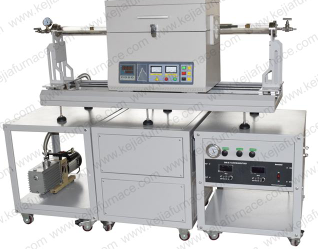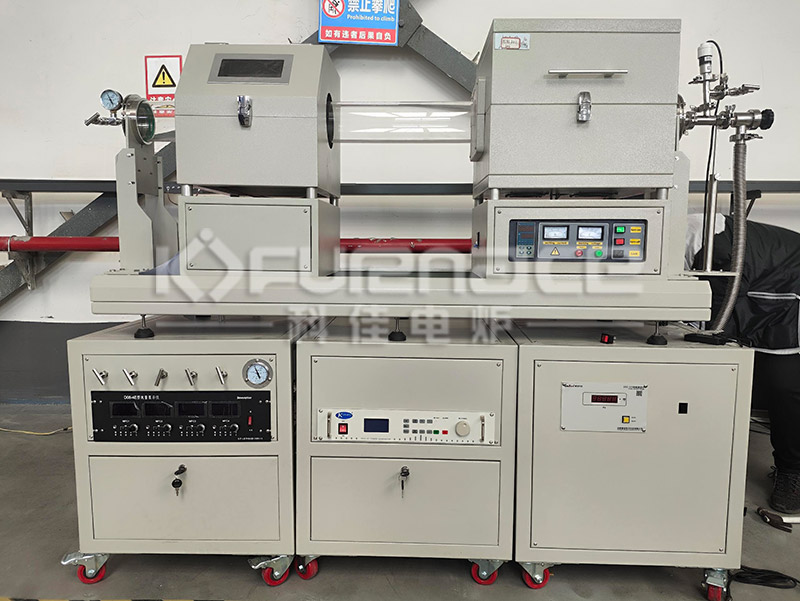Graphene growth can be achieved using CVD (chemical vapor deposition) electric furnace or PECVD (plasma enhanced chemical vapor deposition) electric furnace, depending on growth conditions, efficiency, and quality requirements.
CVD electric furnace
Principle: Gaseous substances containing carbon are introduced into a furnace under high temperature and high vacuum conditions, using hydrogen as the reducing gas, and the resulting graphene is deposited on the substrate surface.
characteristic:
Simple equipment and easy operation: CVD tube furnaces and other equipment have relatively simple structures and are easy to operate.
High reaction temperature and long time: usually requires high temperature (such as around 1000 ℃) and long reaction time (such as 30 minutes), which consumes a lot of energy.
The flatness of the film may be limited: due to the lack of pressure control, the growth of the film is prone to wrinkling, which affects the flatness.
Wide applicability: Suitable for basic research and small-scale preparation of graphene in scientific research institutions, universities, etc.

The most commonly used CVD is graphene growth furnace (click on the image to view product details)
PECVD electric furnace
Principle: Based on CVD, plasma assisted deposition is introduced, utilizing high-energy electrons in the plasma to promote chemical reactions, reduce deposition temperature, and shorten reaction time.
characteristic:
Low deposition temperature and short time: Due to the auxiliary effect of plasma, PECVD can achieve rapid deposition at lower temperatures, improving production efficiency.
High film quality: Plasma helps to form more uniform and dense graphene films, improving film quality.
Complex equipment and high cost: PECVD equipment is relatively complex, with high manufacturing and maintenance costs.
Suitable for industrial production: Due to its high efficiency and quality, PECVD is more suitable for rapid deposition and growth of graphene.

PECVD slide furnace commonly used for graphene growth (click on the image to view product details)
Choose Suggestions
For research institutions or universities: If they mainly conduct basic research on graphene and do not have particularly high requirements for growth efficiency and film quality, CVD electric furnaces can be chosen.
For precision coating experiments: If you pursue efficient and high-quality graphene production and can afford high equipment costs, it is recommended to choose a PECVD electric furnace.
precautions
Substrate selection: Different substrate materials (such as copper, nickel, etc.) have a significant impact on the growth mechanism and quality of graphene, and suitable substrates need to be selected according to actual needs.
Growth condition control: The pressure, temperature, carbon contact area, and other conditions during the growth process have a significant impact on the quality and thickness of graphene and require precise control.
Thin film transfer: The synthesized graphene film usually needs to be transferred onto the target substrate for further application, and damage to the film should be avoided during the transfer process.
Overall, CVD electric furnace and PECVD electric furnace each have their own advantages and disadvantages, and the specific selection should be comprehensively considered based on actual needs, growth conditions, and economic factors.Click to learn more PECVD devices! Or click on online customer service to learn more about product information!